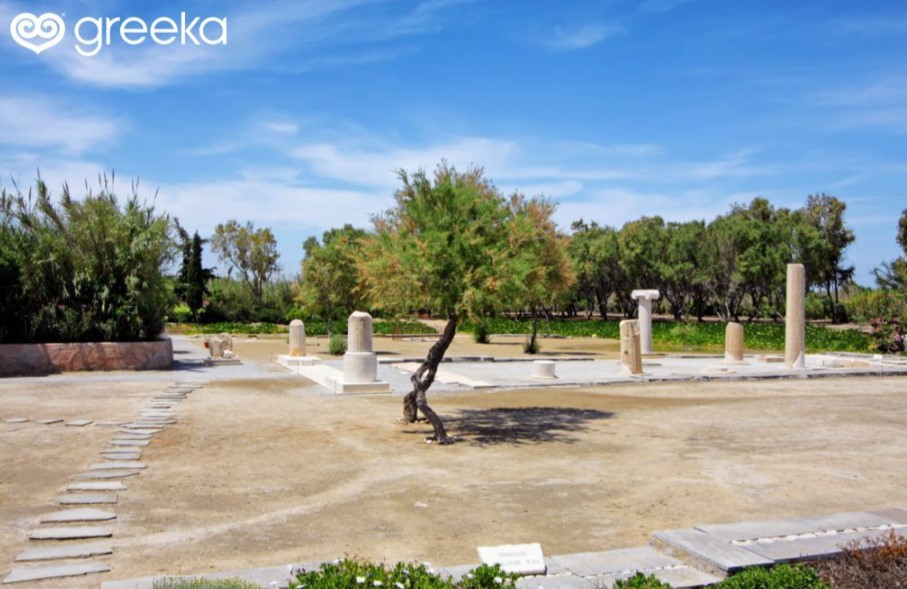Naxos is the largest of the Cyclades island group and it spans seaside ports, mountain villages, ancient ruins and stretches of beach. While Naxos is best known for its beaches and scenery, it also has some ancient sites to explore. Arriving at the port you find (yet another) charming little town set on the side of a hill. Jill’s phone has a range of functions in it that allows her to remove unwanted people and adjust the sky colour from what was really there…any guess which of the below photos had her magic done to it.




Of course, Jill got our accommodation up the damn hill, while all the sights and restaurants were down the damn hill. On the upside, this time it was only about a 700m walk each way (if you took the shortcut across the gravel hill) and without too many stairs. The route if we took the footpath was considerably longer, but we didn’t use that. Our room was fantastic and the view was pretty good so the 700m walk could be abided.
The Temple of Apollo Portara (or the Great Door) is the first thing that you see on arrival and is the island’s emblem and main landmark. It is a massive marble doorway that was part of a temple commenced in 530 BC but that was never finished. The temple was supposed to be at least a hundred feet tall but all that remains is the great door and some foundations. The door is around 6 meters high, 3.5 meters wide and consists of separate monoliths. Each one weighing about 20 tons.


To get to the Islet you walk across a short causeway where the first thing that you come across is a statue of Aphrodite. The statue has no information about it, it just stands there overlooking the causeway to the islet. For those that love their Greek Myths – the islet of Palatia was where Ariadne, the Minoan princess, was abandoned by her lover Theseus after he killed Minotaur on the island of Crete.





Having walked the causeway there are some rough stairs to get you up to the site of the doorway. While there are many tourists who go here, it is large enough to get some pretty nice unobstructed views (and photographs). Unless of course, you want the sunset shot, then you will be one of hundreds.






Up the hill in the township is Kastro (Castle), this is the old Venetian quarter of the town, along with your usual collection of churches. It comprised the entire town of Naxos when the island was under Venetian rule but the modern town has since been built around it.






The township is yet another charming little place with an awesome seafront promenade, narrow streets, funky shops and restaurants, churches everywhere you look, and of course, lots of stairs. The fun bit here was the random paintings, signs and adages that you run across as you wander around the town.






The seafront walk was as expected, with cafes, restaurants and tourist shops aplenty. The thing that we had read about consistently but had not seen until here was the octopus drying in the sun. It has been mentioned in all of the tourist blurbs but not seen until Naxos.






Alas, our time in Naxos was the first time that our plans were impacted by rain (something we have hardly seen so far). We got a really good day hitting the main town area and all of the sights around there but the outer ones seemed like quite an effort, especially in the wet. The island itself is lovely and if time was not a factor we would happily have explored it more fully.
The Naxos Melanes Kouros Statue is located outside the village of Melanes, it is 6 meters long and dates back to the 7th century. The Kouros of Apollonas dates from the 8th century BC. And the Kouros of Flerio, dates back to 570 BC. All of these statues are little more than rocks lying on the ground that have been left where they were found. As such we chose not to hire a vehicle in the wet and drive to see them, but rather grabbed some random pics from the web to show you what we did not miss.



Near the village of Sangri (about 10 km from Naxos Town) lies the sacred temple of Demeter. The weather unfortunately caused us to miss this one which was quite the pity. It is a magnificent temple that was made of the finest quality Naxos marble and dates back to the 6th century BC.



There was also the temple of Dionysus, but our research showed that these were little more than a few nubs of columns, so we passed on that one and stole this image from the tourism website.

While it seems like not too much happened here on Naxos, we really enjoyed our time here. It was laid back with enough to see and do to keep you amused. And the food options were amazing, although lacking in fruit and vegetable options (a usual thing here in Greece).